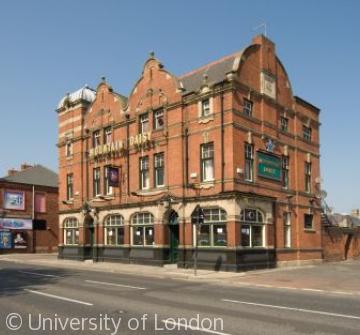Inns and pubs

Sunderland was certainly not short of public houses and beerhouses. As breweries extended their control and invested money in outlets for their products, so a new, grander style of pub appeared, many of which survive.
Sunderland was certainly not short of public houses and beerhouses. As breweries extended their control and invested money in outlets for their products, so a new, grander style of pub appeared, many of which survive. The specialist architects J. Oswald and Son of Newcastle, working for Newcastle Breweries and known for elaborate bar fittings, designed the Foundry inn and the Blue Bell, Roker Avenue, both in 1901, and rebuilt the Wheatsheaf (1898) and General Havelock, Southwick (1904). B.F. Simpson of Newcastle built the Grey Horse (1903) and remodelled the Half Moon, both in High Street East, but his finest work is the Dun Cow, High Street West (1901), an Edwardian gin palace drawing in clientele by its promise of light, warmth and luxurious fittings. Hugh Hedley of Sunderland designed the Londonderry Arms, High Street West (1901-2), on its awkward triangular site, and the small but decorative Tramcar, Southwick Green, in 1906. W. & T.R. Milburn were responsible for many pubs, mainly after the First War. The most impressive, and still complete survival of an Edwardian drinking palace, is the Mountain Daisy, Hylton Road (1901). See M. Girouard, Victorian Pubs (1984); L.F. Pearson, The Northumbrian Pub (1989), 122, 98, 137, 85-6, 81-2, 126.
Content generated during research for two paperback books 'Sunderland and its Origins: Monks to Mariners' (ISBN 13 : 9781860774799) and 'Sunderland: Building a City' (ISBN 13 : 978-1-86077-547-5 ) for the England's Past for Everyone series










